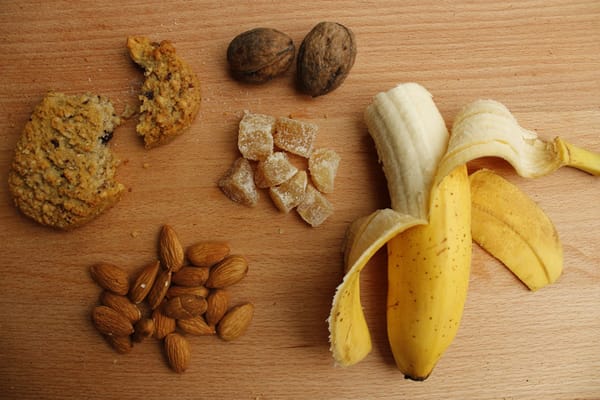14 Simple Daily Habits for Better Health and Energy

A healthy life requires no intimidating scale of commitment. Many people think their results demand strict diet plans and lengthy exercise sessions followed by perfectly planned schedules. The most substantial long-lasting difference happens when people perform tiny regular health actions without dominating their schedules.
These habits boost your energy levels and brighten your mood as well as your confidence throughout time periods. These actions combine through consistent practice to produce large-scale physical and psychological wellness advantages.
This guide covers 14 practical daily health habits, explaining why they work, how to do them, and strategies to make them stick in your life.
Whether you are busy, working shifts, or just starting your wellness journey, these habits are realistic, approachable, and effective.
1. Hydrate First Thing in the Morning
Water is essential for nearly every function in your body, including digestion, circulation, and brain performance. Many people wake up mildly dehydrated, which can lead to fatigue, poor focus, and cravings for food that your body doesn’t actually need.
Starting your day with water establishes optimal hydration foundation. The human body benefits from small fluid intake values in the morning because they trigger better digestive function and decrease overall hunger levels during the day.
When you stay hydrated consistently your body builds better energy along with mental clarity which makes it simpler to continue following healthy routines.
Essential steps:
- Drink a full glass of water immediately after waking.
- Keep a bottle within reach and refill it throughout the day.
- Natural flavors like lemon or cucumber infusion can make plain water taste better.
2. Move in Short Bursts Throughout the Day
Exercise does not have to be long or complicated to count. Regular interval exercise expressed through bursts of movement releases endorphins that control mood and focus while simultaneously improving circulation and protecting your joints.
Your body benefits from short movements because they eliminate the harmful physical effects that develop during extended minutes of sitting.
Moving your body briefly during times between work permits your system to remain active while maintaining an informal exercise pattern. Your body needs to understand that normal movement generates increased energy and higher levels of alertness.
You can start by:
- Taking a 10-minute walk after meals.
- Performing a short stretch or mobility sequence in the morning.
- Enjoy a music-filled dance session during household chores.
3. Include Protein With Every Meal
Protein is critical for muscle maintenance, satiety, and blood sugar regulation. Meals low in protein often lead to mid-day crashes, overeating, and constant cravings.
Taking in protein at every meal provides your body with essential nutrients for best possible body functioning. When we eat proteins we maintain consistent energy throughout the day and enhance fitness recovery and minimize high-calorie snacking behaviors.
Tips for implementation:
- Focus meals around eggs, yogurt, tofu, chicken, fish, beans, or lentils.
- Replace sugary snacks with nuts and boiled eggs as high-protein snack choices.
- Start with planning meals according to protein needs then add vegetables and whole grains.
4. Slow Down While Eating
Eating quickly can interfere with your body’s natural fullness signals, leading to overeating. Taking time to eat your food mindfully delivers better digestion and lets you enjoy your meal more effectively.
Eating slowly helps your body detect when you are full and minimizes the odds that you become uncomfortable or overeat your meal. Taking time to eat mindfully develops your ability to maintain a relationship with food that yields greater pleasure during your meals.
Practical ways to practice mindful eating:
- Put your fork down between bites.
- Take small sips of water throughout your meal.
- Ensure that screens and distractions are eliminated during meal times.
- Mindful eating improves digestion and satisfaction.
5. Step Outside Daily
Exposure to natural light and fresh air supports mood, immune function, and circadian rhythm. Just spending a little time in direct sunlight can replenish your mind and relieve your stress while enhancing your mental focus.
Your body's natural chain between sleep and waking strengthens with regular outdoor time and your vitamin D levels increase to protect your bones and your overall medical condition. Nature breaks of just a few minutes throughout your day act as effective mental rest periods.
Simple strategies:
- Take a short walk after lunch or dinner.
- Sit by a sunny window if going outside is not feasible.
- Make morning sunlight exposure part of your daily routine.
- Physical activity and being outdoors support health.
6. Establish a Calming Sleep Routine
Sleep quality is a foundation for health. The quality of your sleep directly influences your energy reserve together with your mood state and metabolic functioning and appetite management.
Establishing a regular calming pre-bedtime routine allows your body to relax while giving mental signals for nocturnal rest preparation.
When you make sleep your highest priority it becomes easier to maintain other health-related practices. Your body benefits from deep restorative sleep by achieving clearer mental functioning and having a stronger immune system and better healing from daily activities.
Steps for a sleep-friendly routine:
- Dim lights and limit screen time 20–30 minutes before bed.
- Choose to do relaxing activities such as reading books together with slow stretching movements.
- Schedule sleep times and wake-up times consistently through the whole week including weekends.
7. Add Vegetables to Two Meals Daily
Vegetables contain vital vitamins alongside minerals and antioxidants and dietary fiber. People who eat vegetables on a regular basis achieve better digestive performance as well as managed gut health with reduced hunger.
Which vegetables you eat twice per day deliver the vital nutrients your body requires for both sustained energy and total body wellness. People can manage small steady dietary increases easier than vigorous dramatic modifications.
Implementation ideas:
- Fill half your plate with vegetables at lunch and dinner.
- Maintain ready-to-use stocks of pre-washed greens alongside frozen vegetable blends.
- Experiment with cooking methods to make vegetables enjoyable.
8. Make Healthy Foods Easy to Access
Your environment controls what foods you choose to eat. When foods remain visible and within easy reach consumers are more likely to eat them than if their snacks remain hidden from sight.
Readily available healthy foods that people can effortlessly reach create better eating habits by minimizing the need for willpower. Foods become more accessible through small alterations in your environment which leads to gradual dietary behavior changes without confining your choices.
Key actions:
- Place fruit, nuts, or yogurt in visible, easy-to-reach spots.
- Put your sweet treats into areas that require effort to access and keep them out of your direct line of sight.
- Prepare nourishing snacks ahead of time to make healthy eating fast and simple.
- Healthy food environment matters for dietary behavior.
9. Break Up Long Sitting Periods
Extended periods of sitting lower metabolism pace while creating postural discomfort and decreasing overall vitality. Frequent break times function as joint protection devices while simultaneously preserving blood flow and preventing tissue stiffness.
Brief periods of rest keep your body fresh while stopping your organs from stiffening during extensive durations of immobility. Your physical comfort together with your brain's functioning improves when you take multiple micro-movement breaks throughout your day.
Ways to implement:
- Stand or stretch every 45–60 minutes.
- Move your body for a minute or two between tasks.
- Use standing exercises during your call time to stay active.
10. Practice Gratitude Daily
Physical wellness depends directly on mental wellness. A daily practice of gratitude decreases stress levels and boosts mood and creates better incentives for engaging in healthy activities.
Consistent gratitude practices build a positive outlook which supports your ongoing dedication toward health routines. A gratitude practice enhances your capacity to handle adversity while maintaining your emotional equilibrium.
Suggestions:
- Write down one thing you are grateful for each morning or night.
- Before going to bed review the day's optimistic events.
- Each day say kind words to someone you know.
11. Prioritize Protein or Fiber for Snacks
People's health goals are often derailed by snacking on foods loaded with sugar alongside refined carbohydrates. Snack choices that provide protein or fiber enable blood sugar stabilization and extended energy release while minimizing hunger triggers.
Proper snack selection maintains a steady stream of energy while also helping you control your weight goals. Replacing less healthy snacks with more balanced choices develops better dietary habits through natural progression.
Ideas:
- Swap chips or cookies for nuts, fruit, or yogurt.
- Make snack combinations by pairing fruit with nut butter for longer-lasting feeling of fullness.
- Keep grab-and-go nutritious food options available for your busy schedules.
12. Take Short Movement Breaks During Work
Extended desk work sessions produce decreasing mental sharpness as well as mounting physical tension. Brief breaks in movement promote body circulation alongside improved flexibility and better productivity levels.
Throughout the workday brief movement breaks prevent your body from fatiguing while sustaining your energy. These breaks create pronounced positive results in posture and focus that become evident after weeks of use.
Implementation:
- Perform shoulder rolls, neck stretches, or standing leg raises hourly.
- Walk short distances between tasks.
- Combine movement with daily tasks like filling water bottles.
Read more: Muscle Mass: How Much You Should Have and the Best Ways to Measure It
13. Replace Sugary Drinks With Green Tea or Herbal Infusions
The body experiences blood sugar spikes when drinking sugary beverages that create cravings while green tea provides antioxidant-driven hydration that contains minimal calories.
Soda drinkers who delete one beverage daily for tea or infused water experience fewer sugar consumption while supporting their body's metabolic system. The regular practice of this consumption method helps you become more mindful across the entire day.
Tips:
- Enjoy a warm cup during a mid-afternoon break.
- Pair your tea with a brief walk for added energy.
- Explore different herbal blends to keep variety.
14. Use Habit Stacking for Consistency
New habits are easier to maintain when attached to existing routines. Habit stacking becomes automatic through the process of stacking which simultaneously eases cognitive burden related to remembering multiple conduct patterns.
People establish daily health habits by connecting them to everyday reminders so they become natural scheduled activities. This method produces consistent results with minimum exertion required.
Examples:
- Drink water after brushing your teeth.
- Stretch while waiting for coffee to brew.
- Write a gratitude note after your morning shower.
Example Daily Routine
Morning: Drink water, stretch or light movement, protein-rich breakfast, gratitude note.
Afternoon: Include vegetables at lunch, short walk after eating, protein or fiber snack, brief movement breaks hourly.
Evening: Balanced dinner with protein and vegetables, light outdoor break or stretch, pre-sleep routine with dim lights and no screens.
This simple and adaptable routine helps implement several health habits each day while remaining easy to follow.
Weekly Habit Tracker Plan
- Week 1: Morning hydration and movement bursts
- Week 2: Add protein and vegetables consistently
- Week 3: Implement sleep routine and gratitude practice
- Week 4: Combine all habits and track progress
Track energy, mood, and cravings daily. Stay consistent as you work toward your goals and celebrate every small success.
Conclusion
Success in health requires measured steps instead of extreme tactics. Persistent practice of daily health routines generates progressive advantages affecting both energy levels and mood states and general health.
Begin your health improvement by learning one habit then build additional layers of healthy behavior conversions. Throughout several weeks these deliberate tiny changes transition into usual behaviors which create lasting health improvements.
If you start small with your wellness efforts today you will build long-lasting health and stay fit for life.



